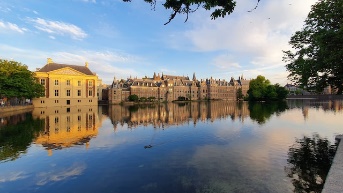Right now, it seems Artificial Intelligence (AI) is playing a role in every area of our lives. The European Parliament defines as the ability of a machine to exhibit human-like skills - such as reasoning, learning, planning and creativity. Recently, the AI solution ChatGPT, in particular, has been in the news frequently because, among other things, it seems to give advice independently, and the question is how ethical and correct these opinions are.

AI can not only write texts, there are already solutions that 'self' create images. Recently, the artwork created by AI: 'A Girl With Glowing Earrings' was exhibited at the Mauritshuis, inspired by 'The Girl With The Pearl Earring' by Vermeer. From a copyright perspective, these possibilities raise several discussions. This discussion first focused on whether AI could "self-copyright" images and, if so, who is the copyright holder. Now the discussion also focuses on whether AI, by producing images inspired by pre-existing images, is infringing copyright. And if the latter, who is liable?
Copyright protection is subject to a number of conditions. First, the creation (also called "the work") must have its own original character. This means that it may not be derived from another creation; it must be the creator's own intellectual creation. In this sense, therefore, it must be "self-conceived. Second, the creation must bear the creator's personal stamp: a human creator must have made free, creative choices. In practice, these thresholds are not high and are met fairly quickly. In other words, images are copyrighted fairly quickly.
When AI creates a copyrighted image, who is the owner of its copyright?
AI is "as smart as what you put in": through algorithms, AI will "itself" create a new work of art (the training data) based on existing works. Whether it has its own original character then depends on whether it is its own intellectual creation, or, for example, is (too) similar to the original. Where the shoe often wrings is the second criterion: whether there is a personal stamp of the creator, in which he or she has made free, creative choices. In this case, we are talking about a human creator. With that, the matter seems settled: AI is not human = therefore no copyright protection.
Currently, however, there is no fully autonomous AI (yet). An AI acts at the behest ("prompts") of a person who wants to achieve a result. In that case, it is quite possible that the client, is the copyright holder. When images created by AI are reworked, there is also easily a personal stamp of the creator there. In short, the image created is not copyrighted, but the recognizable input or post-processing of these images is.
Even the variation on "The Girl with a Pearl Earring" which hung in the Mauritshuis included the name of the person who submitted it and not the application used to create it. There was a recent case in the US as to whether a cartoonist held the copyright to a comic developed by AI (1). That turned out not to be the case. In addition, there is currently a class actions lawsuit pending from several artists against a number of AI programs because they feel these results infringe on their copyrights (2).
As mentioned above, images are "put into" an AI so that it can learn from them. Depending on the result, a new image may be subject to copyright infringement. Copyright infringement occurs when protected elements are copied.
Simply put, two situations are possible. The first: the AI creates an entirely new image without recognizable/protected elements of the training data. Then there is no copyright infringement. The second variant is that the AI creates a new image in which original elements of other images are copied. This is the case when an image of a person is created in which all individual parts (eyes, nose, eyebrows, etc.) are copied exactly from other portraits.
This does leave the question: who is then liable? Again, what was said above applies: there is no fully autonomous AI on the market (yet). Depending on the prompts given, or the person who developed the AI, this could be the client or the company/programmer.
As indicated above: there is no fully autonomous AI available on the market (yet). However, developments with AI are moving fast and so is the way it creates its own images. Depending on the prompts given, or the person who developed the AI, this may make the client or the company/programmer the copyright holder on the images created, or conversely liable for a copyright infringement.
https://www.volkskrant.nl/cultuur-media/bedenker-krijgt-geen-auteursrecht-op-stripverhaal-gemaakt-met-kunstmatige-intelligentie~b9661d7e/?referrer=https%3A%2F%2Fwww.google.com%2F
https://www.lexology.com/library/detail.aspx?g=6bd959aa-ad22-43ea-933c-bbe61028f723

